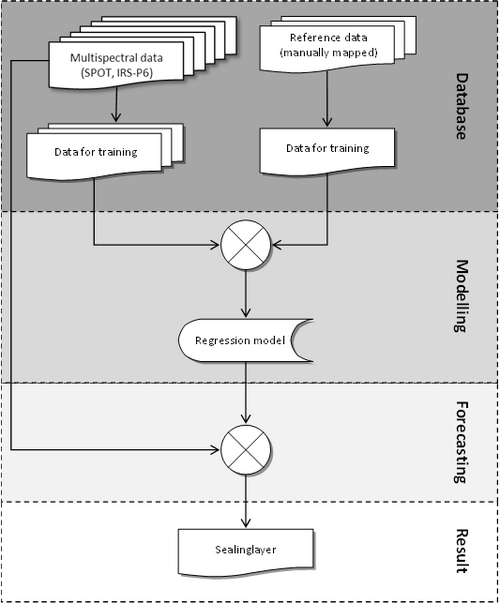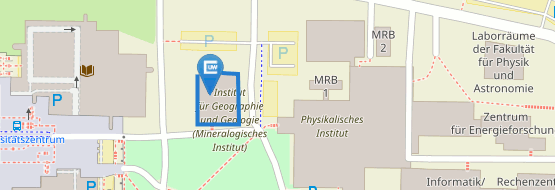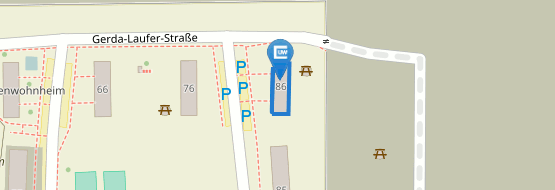Soil sealing 2006
Germany feature an increasing loss of land resources due to rapidly growing settlements and transport infrastructure. This development is strongly associated with an increase of impervious surface. Sealing of soil leads to an irreversible loss of its ecological, historical and economic functions. Moreover evapotranspiration and infiltration capability are reduced. Particularly in urban environments this development is involved with the emergence of heat islands, the reduction of humidity and increased dustiness – effects that have negative influences on the local climate. Due to these effects the identification, characterization and monitoring of impervious surface is becoming a significant issue in environmental research and policy. Here, remote sensing technology supplies various valuable opportunities. Thus we implemented an objective, state-wide and spatially detailed survey of impervious surface by means of Support Vector machines (SVM) based on multispectral imagery and ATKIS vector data. Thereby we calculated the
• total imperviousness of residential, industrial and transport areas, and
• the area of impervious surface per head
for entire Germany and its administrative subdivisions.
The developed approach is based on a half-automatic method which uses techniques of digital image analysis on multispectral satellite data for the modelling of impervious surface. Therefore high resolution reference data is used to generate a model for the analysis the medium resolution multispectral imagery with its significantly larger surface coverage. The large spatial coverage of these scenes is the key issue to a low-cost mapping of extensive regions.
The results of this research document that the proposed approach is qualified for an area-wide mapping of the degree of impervious surface.
Contact: Michael Thiel




